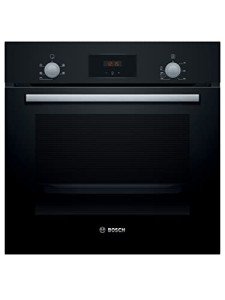Five Killer Quora Answers To Builtin Oven
페이지 정보

본문

The Comprehensive Guide to Built-In Ovens: Features, Benefits, and FAQs
Built-in ovens are a popular option for contemporary cooking areas, using adaptability, effectiveness, and a streamlined style that incorporates seamlessly into cabinets. This article will explore the numerous aspects of built-in ovens, including their functions, advantages, setup options, upkeep pointers, and responses to frequently asked questions.

What is a Built-In Oven?
A built-in oven is developed to be installed within kitchen cabinets and is available in different configurations, such as single or double ovens. Unlike freestanding ovens, built-in models supply a streamlined look and use more flexibility in kitchen style. They are available in electric integrated oven, gas, and steam options, catering to a range of cooking preferences.
Features of Built-In Ovens
Built-in ovens are loaded with functions that boost cooking experiences. Here are some of the most typical functions to consider:
| Feature | Description |
|---|---|
| Self-Cleaning | Many models consist of a self-cleaning function that burns residue at high temperatures, simplifying maintenance. |
| Convection Cooking | This feature uses a fan to circulate hot air, cooking food more evenly and rapidly. |
| Smart Technology | Some ovens come equipped with Wi-Fi connectivity, Builtin oven allowing users to control the oven remotely via mobile phone. |
| Multiple Cooking Modes | Consist of alternatives such as baking, broiling, roasting, builtin oven and air frying, offering adaptability for various meals. |
| Temperature level Probe | Monitors the internal temperature of food, ensuring completely cooked meals whenever. |
| Streamlined Design Options | Available in built oven numerous surfaces (stainless-steel, black, white) to match kitchen design. |
Advantages of Built-In Ovens
The setup of a built-in oven brings many advantages to any kitchen:
- Space Efficiency: Built-in ovens optimize kitchen space, supplying a clean and orderly appearance without compromising performance.
- Enhanced Cooking Performance: With sophisticated functions like convection cooking and precise temperature level controls, built-in ovens frequently surpass traditional models.
- Style Flexibility: These ovens can be set up at eye level, enabling easy gain access to without flexing down, which can be especially helpful for people with physical limitations.
- Enhanced Resale Value: A well-designed kitchen with high-quality built-in appliances may attract prospective purchasers, improving overall home worth.
- Personalization Options: Many brand names provide personalized styles that fit the particular measurements and aesthetic of specific cooking areas.
Setup Options
When picking a built-in oven, understanding the setup options is essential. Here are the most typical configurations:
Single Built-In Oven: Ideal for smaller sized kitchens, these units offer sufficient space to cook a variety of meals all at once, perfect for everyday cooking.
Double Built-In Oven: Best suited for devoted cooks and large families, double ovens enable synchronised cooking at two various temperature levels, perfect for meals that need different cooking techniques.
Combination Steam and Oven: A hybrid solution that integrates the advantages of standard baking with steam cooking. This choice is outstanding for keeping wetness in foods, making it ideal for baking bread or roasting meats.
Upkeep Tips for Built-In Ovens
Keeping a built-in oven is vital for its durability and optimum performance. Here are some useful maintenance suggestions:
Regular Cleaning: Use the self-cleaning function when required, and clean down the exterior and interior surfaces frequently to prevent grease buildup.
Inspect the Seals: Inspect the oven door seals for any wear or damage to make sure correct insulation and cooking efficiency.
Temperature Calibration: Occasionally test the temperature level accuracy using an oven thermometer, especially if cooking times appear longer than typical.
Ventilation: Ensure appropriate ventilation around the oven to avoid getting too hot, particularly for built-in models that may be surrounded by kitchen cabinetry.
FAQs About Built-In Ovens
1. Are built-in ovens more costly than freestanding models?Yes, built-in ovens tend to be more expensive due to their style, setup requirements, and extra functions. Nevertheless, their advantages can justify the expense in the long run.
2. Can you set up a built-in Builtin Oven yourself?While some handy individuals may attempt to set up a built-in oven, it is suggested to hire a professional to guarantee proper setup, ventilation, and safety requirements.
3. What is the typical life expectancy of a built-in oven?The normal life expectancy of a built-in oven is around 10 to 15 years, depending on use and upkeep. Regular care can assist extend its durability.
4. Are built-in ovens energy effective?Lots of modern-day built-in ovens are developed with energy effectiveness in mind, incorporating functions like insulation and accurate temperature controls that might reduce energy usage compared to older models.
5. Can a built-in oven be fixed if it breaks?Yes, built-in ovens can frequently be fixed. It is recommended to call a qualified technician for medical diagnoses and repair work to ensure safety and compliance with warranty agreements.
Built-in ovens are an excellent addition to any modern kitchen, supplying a combination of style, performance, and advanced cooking functions. With the ideal understanding about their features, advantages, and upkeep, homeowners can make informed options to improve their culinary experiences. As kitchen design patterns continue to evolve, the built-in oven stays a staple for those wanting to blend looks with performance in their cooking areas.
- 이전글The 10 Most Terrifying Things About Cat Door Installation 25.05.20
- 다음글An Easy-To-Follow Guide To Choosing Your Railroad Cancer Settlement Amounts 25.05.20
댓글목록
등록된 댓글이 없습니다.

